=
The rising industrial demands and applications have increased the requirement for sophisticated and top-notch products. Thankfully, there exist numerous casting methods capable of producing intricate and precise products to cater to diverse user needs and applications.

To ensure the selection of the most suitable casting method for one's manufacturing requirements, it is crucial to comprehend the advantages and disadvantages of different types of casting. This article provides a concise summary of various casting methods and their respective pros and cons.
The casting process is a manufacturing technique that creates metal parts of desired shapes by pouring molten metal into a mold and allowing it to solidify and cool to room temperature. This method is capable of producing intricate and complex parts, regardless of their size.
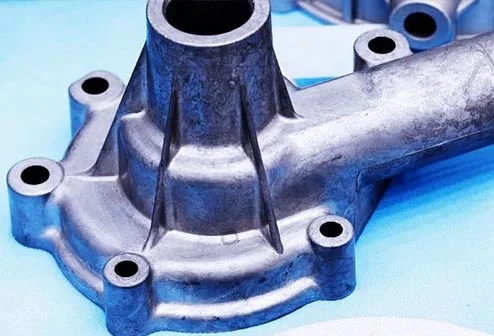
Casting enables the production of isotropic metal parts in large quantities, making it ideal for mass production. Moreover, various casting types exist, utilizing different materials and molds, to cater to specific user requirements.
A variety of casting processes exist, providing versatile options for creating metal parts of different shapes and sizes. For casting type, each technique offers distinct characteristics to cater to specific industrial needs and material requirements.
Sand casting, a type of casting process, finds extensive use in industrial units for mass-producing automotive metal casting parts like engine blocks, cylinder heads, and crankshafts. This method involves a mold composed of silica-based materials, such as naturally-bonded or synthetic sand, which creates a smooth mold surface. The mold comprises two sections: the cope (upper half) and drag (lower half). Molten metal is poured into the pattern via a pouring cup, and left to harden into the desired shape. The final step involves removing excess metal to achieve the finished metal-casting product.
Pros | Cons |
Particularly for low-volume runs, sand casting proves to be relatively inexpensive compared to other methods. | Sand casting results in a lower degree of dimensional accuracy compared to alternative casting methods, making it challenging to achieve precise size and weight specifications. |
Sand casting enables the fabrication of large and complex components, making it suitable for various applications. | Products manufactured through sand casting tend to have rougher surface finishes compared to other casting processes. |
Sand casting can cast both ferrous and non-ferrous materials, providing flexibility in material selection. | |
The tooling required for sand casting is generally less costly compared to other casting processes. |
The sand casting process finds extensive application in various industries for producing metal components with a wide range of shapes and sizes, including automotive engine blocks, aerospace turbine blades, and heavy machinery parts. It is also commonly used in the production of architectural elements like ornamental fixtures and sculptures
Investment casting, or lost-wax casting, is a precise manufacturing process used to create intricate metal components. It involves creating a wax or plastic pattern, assembling it with gating systems, and coating it with a ceramic shell mold. The pattern is then melted and removed, leaving behind a cavity. The shell mold is preheated and filled with molten metal, which is allowed to cool and solidify. Finally, the shell is removed, revealing the final cast product.
The advantages and disadvantages of investment casting can be summarized as follows:
Pros | Cons |
High accuracy and precise dimensional results | Generally higher cost compared to other casting methods |
Ability to create thin-walled parts with complex geometries | Cost efficiency is typically limited to cases where sand or plaster castings are not feasible |
Capacity to cast both ferrous and non-ferrous materials | |
High-quality surface finish and intricate detail in final components |
Investment casting is applied in industries including aerospace, automotive, jewelry, and medical manufacturing for producing complex and detailed metal components.
There are two types of pressure die casting based on the pressure applied: high-pressure die casting and low-pressure die casting. High-pressure die casting is commonly used for mass production of intricately shaped components that require high precision. On the other hand, low-pressure die casting is preferred for the production of larger and simpler components.
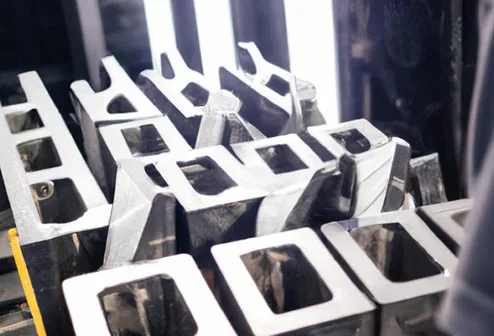
In both types of die casting, nonferrous metals and alloys like zinc, tin, copper, and aluminum are injected at high pressure into a reusable mold coated with a lubricant. The goal is to prevent the metal from solidifying during the rapid injection process, which is why high pressure is maintained. After the casting process is complete, extraction and finishing are carried out to remove any remaining material.
It is important to note that pressure die casting differs from gravity die casting, as pressure die casting involves the injection of molten metal into a metal mold under high pressure. The molten metal quickly solidifies to achieve the desired outcome.
Pros | Cons |
Close size and shape tolerances, ensuring high precision in the production of complex parts. | High tooling costs, involving initial investments in molds and equipment. |
High production efficiency, allowing for the rapid production of large quantities of parts. | Limited material selection, primarily suitable for non-ferrous metals and alloys. |
Excellent surface finish with smooth and detailed surfaces on casted components. | Size and weight limitations, making it less suitable for producing very large or heavy components. |
Strong and durable parts with high mechanical properties, make them suitable for various applications. | Limited design flexibility, as making modifications or design changes to the die cast process can be challenging and costly. |
Pressure die casting is applied in industries such as automotive manufacturing for engine components, aerospace for lightweight components, and consumer electronics for mass production of intricate parts.
Plaster casting shares similarities with sand casting, but instead of sand, it uses a mixture of gypsum, a strengthening agent, and water. An anti-adhesive coating is usually applied to the plaster pattern to prevent it from sticking to the mold. Plaster can fill gaps in the mold effectively. However, once the part is cast, the plaster material commonly develops cracks or defects, necessitating replacement with fresh material.
Pros | Cons |
Exceptionally smooth surface finish. | Generally higher cost compared to most sand-casting operations. |
Ability to produce large parts at a lower cost compared to processes like investment casting. | Possible need for frequent replacement of plaster molding material. |
Higher precision in dimensional accuracy than sand casting. | Limited applicability to casting aluminum and copper-based alloys. |
Capability to cast intricate shapes with thin walls. |
Plaster casting finds application in various industries including art and sculpture, architecture and construction, prototyping and design, ceramics and pottery, dental and medical, education and crafts, and restoration and replication.
Centrifugal casting, also referred to as roto casting, is one of the types of cast iron used for manufacturing cylindrical parts by utilizing centrifugal forces. In this method, a heated rotating die is employed to pour molten metal, which is then distributed within the die under high pressure due to the centrifugal forces.
There are three variations of centrifugal casting: true centrifugal casting, semi-centrifugal casting, and vertical centrifugal casting. Semi-centrifugal casting differs from true centrifugal casting in that the mold is filled using a sprue. In true centrifugal casting, the continuous rotation causes the molten metal to adhere to the sides. Meanwhile, vertical centrifugal casting follows the same process as true centrifugal casting but involves directional molding.
Centrifugal casting is typically used to produce rotational shapes such as cylinders. It is commonly employed for manufacturing parts like bush bearings, clutch plates, piston rings, and cylinder liners. Pouring the metal in the center of the mold helps minimize defects such as blow holes, shrinkage, and gas pockets. However, it may not be suitable for all types of metal alloys.
Pros | Cons |
Improved casting quality | Suited for cylindrical shapes and may not accommodate intricate or non-axisymmetric parts. |
Directional solidification achieved through centrifugal casting leads to improved mechanical properties and greater strength. | suitable for metals with good fluidity like steel, iron, and bronze, and may not be suitable for all metal alloys. |
produce a wide variety of cylindrical parts with complex shapes and internal cavities. | Requires specialized equipment, including spinning dies and molds, which can increase setup costs and maintenance needs. |
offers high production efficiency and material utilization, reducing overall costs per part. | Suitable for smaller to medium-sized parts and may present challenges in handling larger components. |
Initially employed for casting pipes, centrifugal casting has now become widely utilized in various industries such as metallurgy, mining, transportation, irrigation machinery, aviation, national defense, and automotive. This technique is utilized to produce steel, iron, and non-ferrous carbon alloy castings. Common applications include the production of centrifugally cast iron pipes, cylinder liners for internal combustion engines, and shaft sleeves.
The lost-foam casting method is an alternative to investment casting where a foam pattern is used instead of a wax pattern. Once the foam pattern is created, it is coated with a refractory ceramic material through dipping, spraying, or brushing. The molten metal is then poured into the mold, which vaporizes the foam and fills the void to create the desired product.
Pros | Cons |
The lost-foam casting process allows for intricate and complex designs to be accurately reproduced in the final product. | The lost-foam casting process is primarily suitable for ferrous alloys and certain non-ferrous metals, limiting the range of materials that can be used. |
Foam patterns can easily be shaped, allowing for design adaptability and the production of complex geometries. | The production of foam patterns and the setup of ceramic coating processes can result in higher initial expenses compared to other casting methods. |
The process eliminates the need for additional operations such as core removal and assembly, reducing production time and costs. | Lost-foam casting is typically more cost-effective for larger production volumes, making it less suitable for low-volume or custom manufacturing. |
This casting process can be applied to a wide range of materials, including alloy steel, carbon steel, alloy cast iron, and ferrous alloys. It is commonly used for producing products such as pump housings, fire hydrants, valves, and fittings.
Shell molding is a type of casting process that falls under the category of expendable mold casting. It shares similarities with sand casting, however, the primary difference lies in the mold cavity formation. Instead of using a traditional sand flask, a hardened shell composed of fine sand is employed to create the mold cavity. This sand is of a finer grain size compared to that used in sand casting, and it is mixed with a resin. The resin allows for heat treatment, enabling the sand to be thermally processed and solidified into the shell surrounding the desired pattern.
Pros | Cons |
The use of pre-coated resin sand ensures precise replication of intricate details and tight tolerances in castings. | Shell molding requires specific sand and resin types, as well as specialized equipment for preheating and curing molds. |
Shell molding produces smooth and clean surfaces, reducing the need for additional finishing. | The setup cost for shell molding is typically higher due to the need for resin-coated sand and specialized equipment. |
Reusable shell molds and short curing times allow for faster and more efficient production compared to traditional sand casting. | Shell molding is more suitable for smaller to medium-sized castings, making it challenging to handle larger or heavier components. |
Shell molding can accommodate intricate designs, making it versatile for various casting applications. | Some metals may not be effectively used in shell molding, limiting the range of available material choices for casting. |
Shell molding finds application in the production of various industrial items like gearbox housing, connecting rods, small-sized boats, vehicle hoods, cylindrical heads, camshafts, and valve bodies.
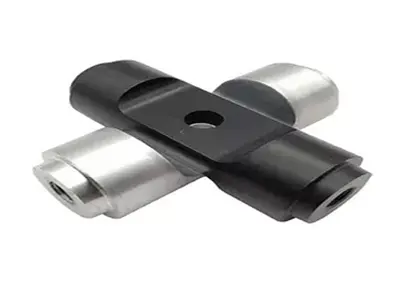 Protect, Enhance, Beautify: The Versatility of Blackening Surface TreatmentsDecember 4, 2023Surface treatments play a vital role in maintaining and enhancing the durability and appearance of various materials. Whether it is for aesthetic purposes, rust prevention, or to improve wear resistan...view
Protect, Enhance, Beautify: The Versatility of Blackening Surface TreatmentsDecember 4, 2023Surface treatments play a vital role in maintaining and enhancing the durability and appearance of various materials. Whether it is for aesthetic purposes, rust prevention, or to improve wear resistan...view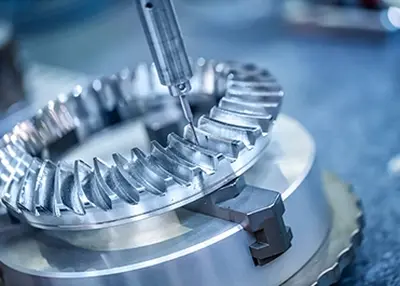 What is Metal Machining?November 3, 2023When it comes to shaping the world around us, few processes play as pivotal a role as metal machining. Whether you're a curious enthusiast or an industry professional seeking deeper insights, this article is your ultimate guide to understanding the essence of metal machining.view
What is Metal Machining?November 3, 2023When it comes to shaping the world around us, few processes play as pivotal a role as metal machining. Whether you're a curious enthusiast or an industry professional seeking deeper insights, this article is your ultimate guide to understanding the essence of metal machining.view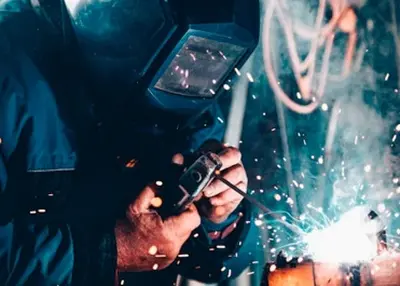 Titanium vs Steel: Is Titanium Stronger Than Steel?August 29, 2023Is titanium stronger than steel? Here's a brief guide that compares steel to titanium from different aspects.view
Titanium vs Steel: Is Titanium Stronger Than Steel?August 29, 2023Is titanium stronger than steel? Here's a brief guide that compares steel to titanium from different aspects.view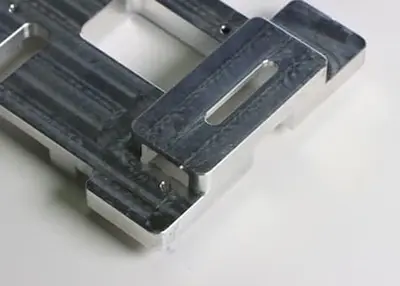 CNC Milling Definition Guide (Latest Insights for 2023)September 8, 2023CNC milling is a process of using a computer-controlled rotating cutting tool to remove material from a workpiece and create a custom-designed part or product. Milling is one of the most common types ...view
CNC Milling Definition Guide (Latest Insights for 2023)September 8, 2023CNC milling is a process of using a computer-controlled rotating cutting tool to remove material from a workpiece and create a custom-designed part or product. Milling is one of the most common types ...view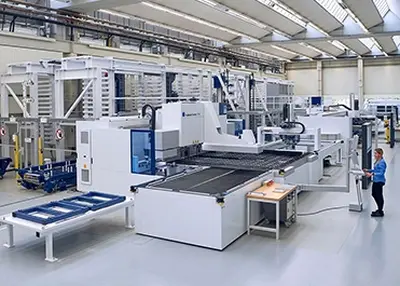 From Start-up to Llarge ManufacturerOctober 10, 2023As a manufacturing startup, your success story starts with proving that your product is marketable. When you prepare for large-scale production, it determines the success or failure of the company, because it is in this situation that you have to invest a lot of money and determine the future direction.view
From Start-up to Llarge ManufacturerOctober 10, 2023As a manufacturing startup, your success story starts with proving that your product is marketable. When you prepare for large-scale production, it determines the success or failure of the company, because it is in this situation that you have to invest a lot of money and determine the future direction.view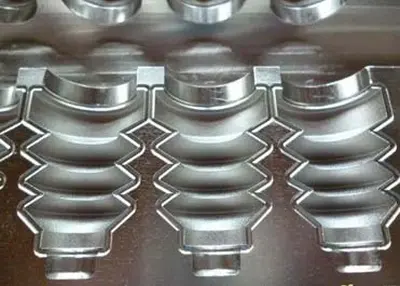 Must-Read for Procurement Professionals! 2023 Report on China's Rubber Molds and Parts IndustryAugust 16, 2023Overview: This report provides an in-depth analysis of the development trends, competitive landscape, and key characteristics of China's rubber molds and parts industry in 2023. It serves as an im...view
Must-Read for Procurement Professionals! 2023 Report on China's Rubber Molds and Parts IndustryAugust 16, 2023Overview: This report provides an in-depth analysis of the development trends, competitive landscape, and key characteristics of China's rubber molds and parts industry in 2023. It serves as an im...view